New filings on par with previous years, following a late rally
New filings in 2021 were down on the peak of 2020, but consistent with a broader trend of increased class action activity over the short to medium term.
As late as the end of September, filings were tracking to be well down on recent years. However, there was a significant spike in the last quarter, with half of all 2021 filings occurring between October and December. All indications are that the late rally was driven by the potential impact on funders of proposed legislative reform, which, if passed, would apply to class actions filed after enactment.
The proportion of competing claims in 2021 was generally in line with the longer-term average.
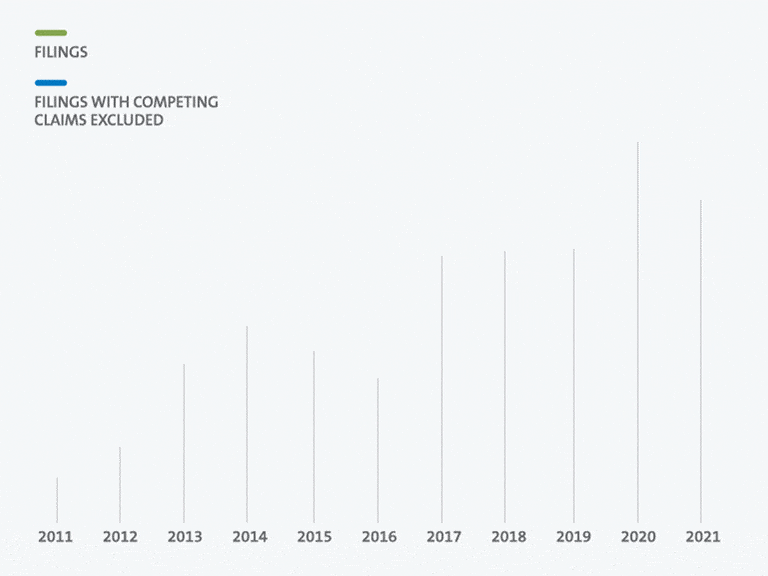
Class action filings
Consumer claims dominate, but also a broad base of other claims
Consumer claims were the most common type of claim filied in 2021. This included claims relating to medical devices, superannuation fees, insurance policies, electricity prices, and freight services.
Employment-related class actions also came to the fore, with claims alleging underpayment of wages in the government, healthcare, mining and industrial sectors.
2021 also saw a broader range of claims overall including in respect to franchisees, treatment of Indigenous persons, environmental contamination, bushfires, resumption of land, and outbreaks of COVID-19.
Shareholder claims, once the most common form of class action, have fallen to their lowest levels in over a decade. While this might be attributed to the change in the law in relation to when damages can be claimed for continuous disclosure breaches, it is more likely the result of pressures and uncertainties in the funding environment, and the run of losses for plaintiffs in cases that have gone to trial.
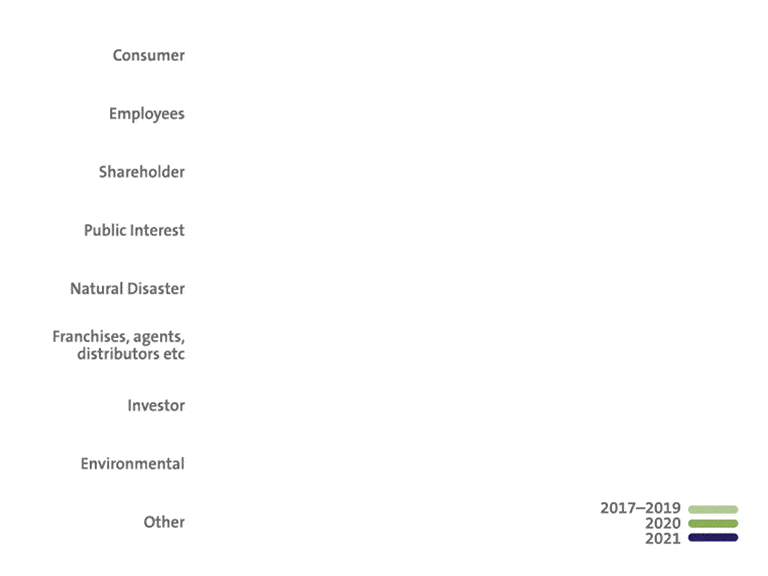
Filings by type (%)
Government sector overtakes banking sector as biggest target
The banking and financial services sector has long been the biggest target for class action filings. However, in 2021 it was the government sector that faced the most claims. This included claims in respect of the treatment of Indigenous persons, environmental contamination and damage, biosecurity, underpayment of federal employees, climate change, prisoner safety, and COVID-19 lockdowns.
The healthcare sector also faced a significant increase in claims. All but one of these claims related to one type of medical device (pelvic mesh) or underpayment of junior doctors. Given the concentration in these two types of claims, this may be a momentary uptick for the sector, rather than indicative of a sustained increase in class action risk.
The banking and financial services sector remained a major target, albeit with a marked reduction in claims compared to previous years. This is perhaps an indication that class actions arising from issues exposed in the Royal Commission are beginning to tail off. However, even if that is the case, we think it is too soon to make any predictions about a material decline in class action risk for this sector.
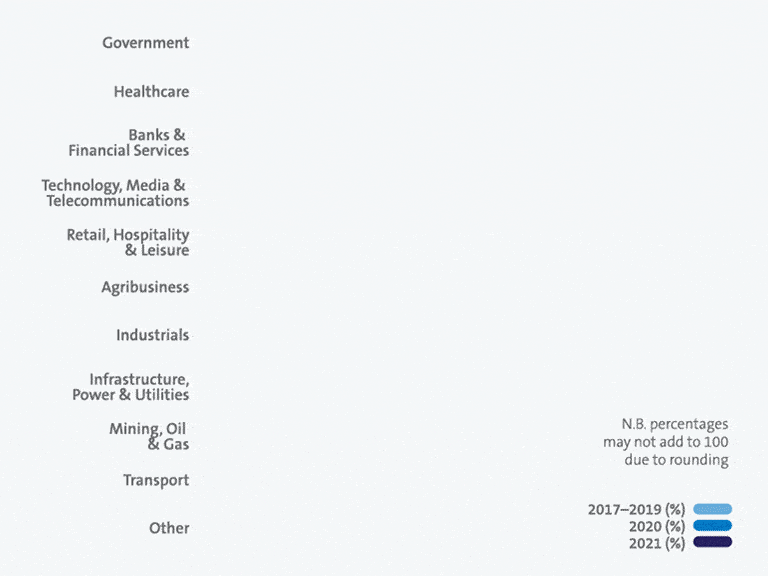
Filings by sector (%)
Litigation funding – uncertainty continues
2021 was another uncertain year for litigation funders. That said, the number of directly funded claims in 2021 was well up on 2020, with most of the cases filed in the last quarter spike referred to above being funded. The numbers are, however, still lower than longer-term trends.
This is likely the result of a combination of pressures on funders, including those discussed in the section below.
It is, however, important to note that these statistics do not capture the extent to which funders may be indirectly funding claims (including, for example, through portfolio funding of a plantiff firm's book of claims).
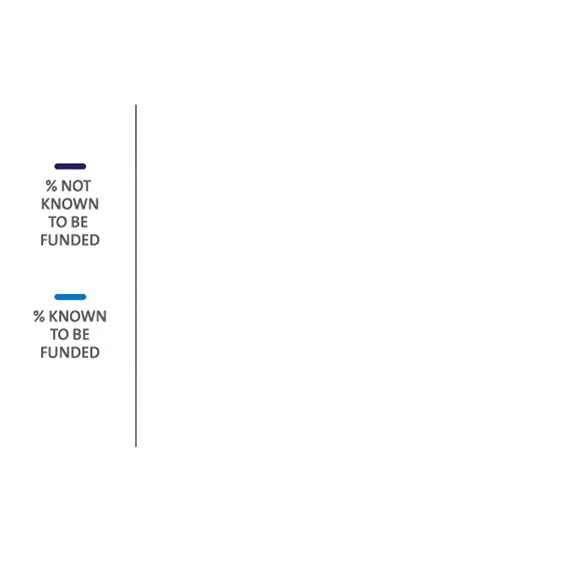
Third party funding
Where are class actions being filed?
In our 2021 Year in Review we noted that, while the Federal Court was still attracting the vast majority of class action filings, in 2020 there had been a significant shift away from new filings in the Supreme Court of NSW in favour of the Supreme Court of Victoria – a shift we attributed to the availability of contingency fees for class actions in the Supreme Court of Victoria. While the trend has continued, it is not as pronounced as in 2020. In fact, for the first three quarters of 2021, more claims were filed in NSW than Victoria.
One class action was filed in the Supreme Court of Queensland. Two class actions (both relating to bushfires) were filed in the South Australian Supreme Court under its 'representative action' model.
It seems likely that a class actions regime will finally be introduced into the Supreme Court of Western Australia (after more than a decade of debate and consideration) following the introduction of a bill modelled on the Federal Court regime in August 2021.
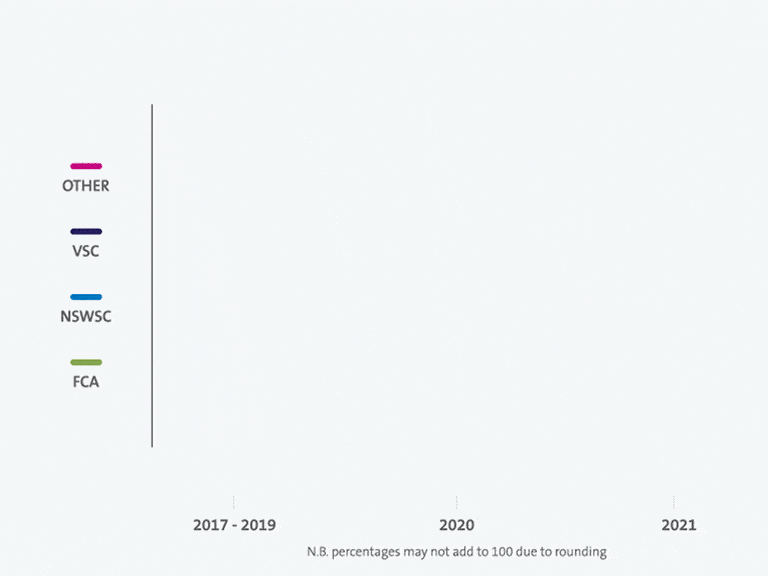
Filings by jurisdiction
Claims arising from COVID-19 issues
Unsurprisingly, there were a number of class actions directly arising from the pandemic in 2021. These included:
- three class actions brought on behalf of small businesses in respect of business interruption insurance;
- a class action against the NSW Government in relation to the risk of infection in prisons; and
- a class action against the Victorian Government in relation to the lockdown in public housing.
This follows six COVID-19 related class actions filed in 2020 – five in Victoria in respect of outbreaks from hotel quarantine and in aged care facilities, and one in NSW in respect of the Ruby Princess cruise ship outbreak.






